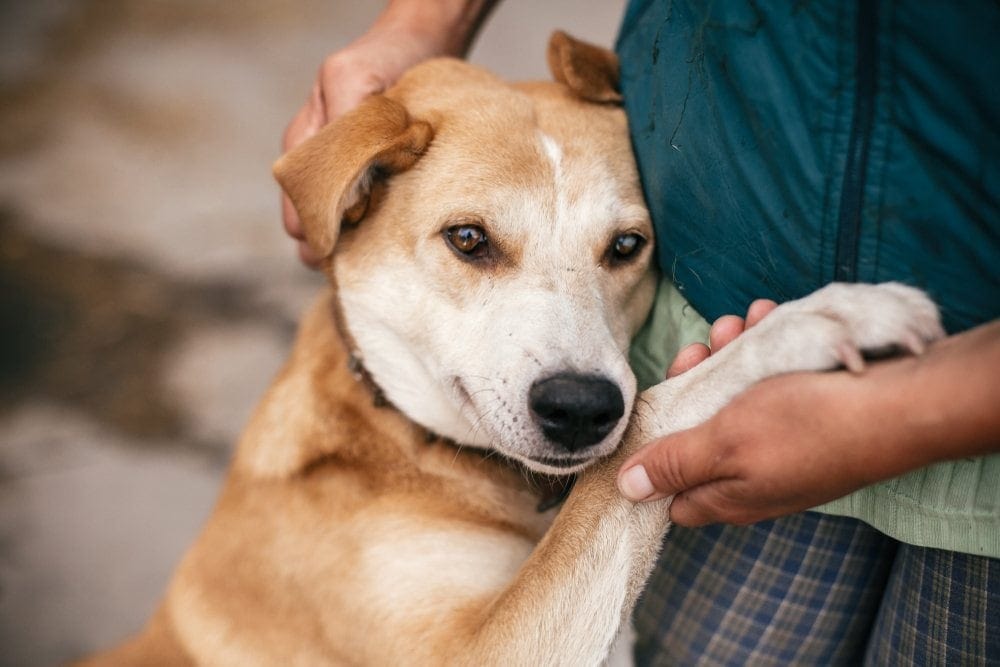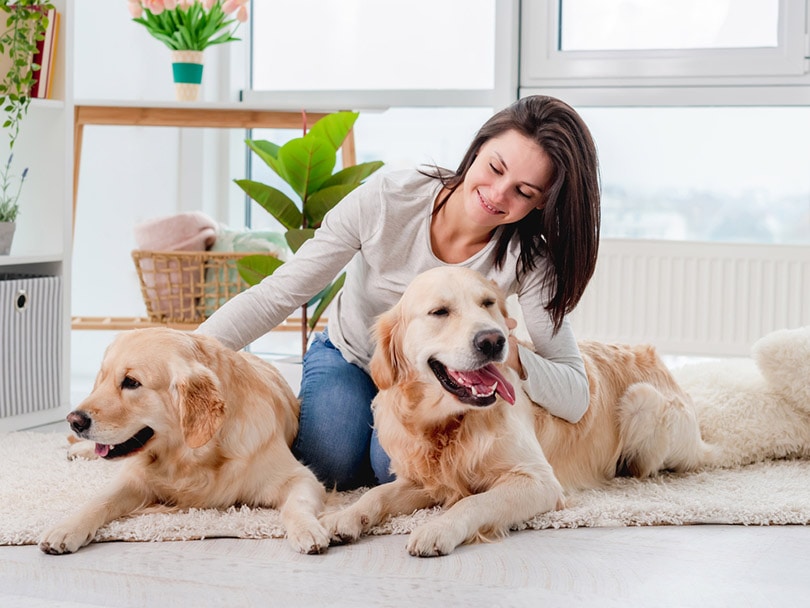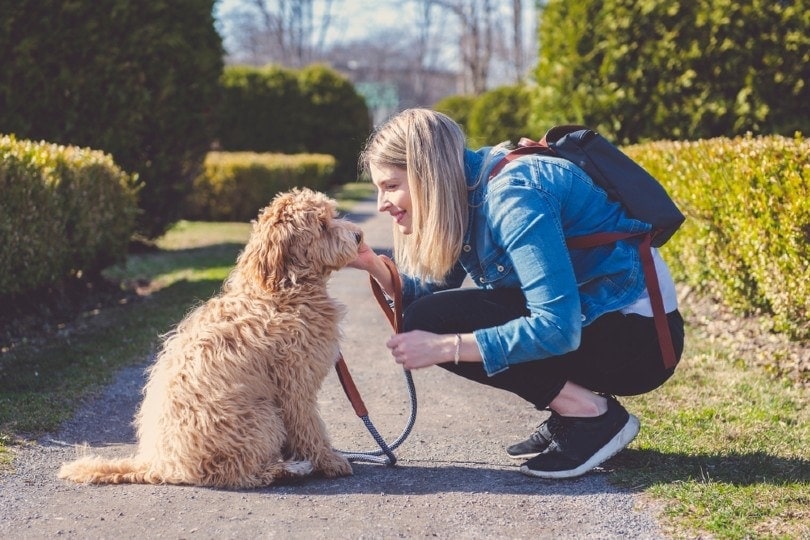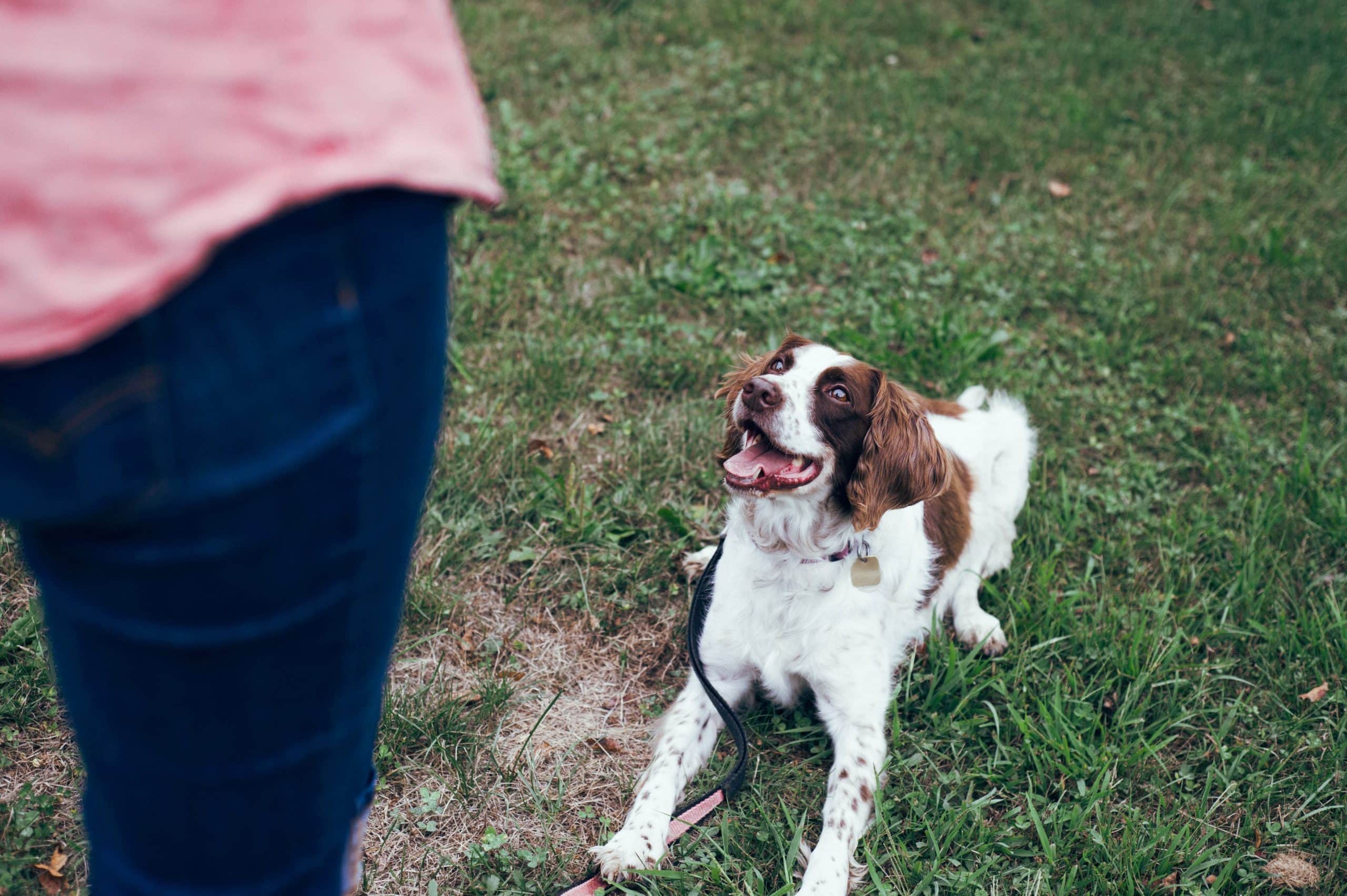
Whether you’re meeting a friend’s dog for the first time or bringing home a shelter dog, there are ways to build a good relationship. Some relationships will be easier than others.
Bringing home a new puppy is an entirely different experience from adopting a dog from a shelter. A puppy’s experience of the world is small, whereas a shelter dog is usually a mystery. Even shelters don’t have the full history of the dogs that stay with them.
Getting to know your dog is crucial in building up trust, as is being patient.
The 11 Ways to Get a Dog to Trust You
1. Keep Your Movements Slow
The goal is to avoid surprising your dog. One of the biggest mistakes people make, because they don’t realize it’s a problem, is they move too fast. If you’re sitting down and planning on leaving the room, try and get your dog’s attention subtly before you stand; make a quiet noise like a sigh, for example.

2. Avoid Eye Contact
Meeting another human’s eye is polite, but for other animals, sustained eye contact is perceived to be a threat. Initially avoid making eye contact directly. With time you can build up to a second of eye contact as a brief greeting.
3. Body Language
Approaching a dog head-on can be scary for an already scared dog or one that is particularly anxious, and it’s better to approach from the side or with your back turned. Avoiding eye contact and indirect body language is a perfect way of showing your dog that you’re not a threat. Remember not to tower over them either. Crouch down to their height and avoid leaning over them.

4. Silence Is Golden
If you’ve owned a dog before, you’re familiar with baby-talk. Some dogs respond to it better than others, and you can figure out what works best by looking out for cues. The baby-talk is working if your dog’s ears perk up or its tail thumps. Other dogs prefer a calm, gentle tone. But sometimes, silence works best. Let your body language speak for you.
5. Observe and Respond
Pay attention to your dog; their behavior is the best insight into their world. Make sure you respond accordingly based on what you notice. Learn the signs of dog anxiety and look out for the earliest signs. Lip licking, yawning, lifting a paw, turning their head away, whale eye, panting and slow motion walking amongst other signs. If their pupils dilate and they step back or growl, stop what you’re doing and give them space. If you get a positive response, like a tail wag, or they step forward, reward the behavior with a tasty treat. Let them come to you first.

6. Respect Their Space
It’s easy to get carried away, especially when your dog shows signs they’re trusting you more, but don’t try to go too fast. If a dog approaches you, it doesn’t necessarily mean they’re ready to be touched or hugged yet. If you force an interaction, you’re not building trust. Give them a space where they can go to be on their own and where you will not pet them. This can be a blanket, mat or crate for example.
7. Get To Know Them
Find out what your dog enjoys doing the most and share the experience with them. Do they enjoy walks in the rain, or is your dog just mad about Frisbees or tug-of-war games? Doing something your dog enjoys will strengthen your bond. Also, play can be a perfect reward for positive behavior instead of just using food.

8. Encourage an Approach
You can encourage your dog to approach you without invading its space.
All you need is a place your dog is comfortable and a plate, bowl, or dish on the floor between you and your dog. When you walk up to the plate, drop a treat onto it, and then back away until you’re at a distance your dog is comfortable with. You’ll know when this is because they’ll approach the plate. Take a break, and then repeat the process. This will teach your dog that approaching you means getting something tasty in return, and they learn to trust your presence.
9. The Retreat Game
This game works best if you’re sitting down or stationary and your dog is looking at you. Toss a treat behind them so they’ll turn to get it and step toward you or look at you in anticipation of another. Because you’re encouraging your dog to move away from you for a treat, it reduces the likelihood of fearful or defensive aggression.

10. What Next?
Once you’ve gained your dog’s trust and they’ve approached you, you might wonder what the next step is. You don’t want to overwhelm them or have them scrambling away from you because of a wrong move on your part.
Once your dog has approached you of their own accord, pat them gently on the chest, under the chin, or on the butt. Avoid the belly or head since it can be intimidating. Pet them for around 3 seconds, put your hands on your lap, and see what they do next. If they’re receptive to more petting, repeat the action.
11. Training Games
Play is an excellent bonding experience and a way to instill trust and confidence. Teaching your dog tricks is the simplest option. The trick you pick is irrelevant; it’s much more about setting your dog up to succeed by using positive reinforcement and rewards. Best to pick something simple so you set your dog up for success.
Hide-and-Seek is a great way to get your dog to explore their new environment. Pets not only need to feel comfortable with you but also with their new home. Place treats in easy-to-reach places around your home, and as their confidence grows, place them in harder-to-reach areas.

How Will These Tips and Tricks Differ If My Dog Is Adopted?
Approximately 6.3 million companion animals are estimated to go into shelters nationwide each year, and 390,000 dogs never find their forever homes and are euthanized. These are devastating statistics, but the trend of adopting from shelters is rising. Approximately 2 million dogs are adopted annually, and 710,000 stray dogs are returned to their owners.
Building a relationship with a dog from a shelter can be complicated, and sometimes owners have their hearts in the right places but are underprepared for the challenge.
Conclusion
Whether you’re bringing home a shelter dog or a brand-new puppy, these tips are the perfect start to building trust and confidence. Making a wrong move could not only set you back but could also be dangerous. Scared dogs can lash out, and that’s not a reaction anyone wants.
People make the incorrect assumption that because they mean well, a dog can tell, and that’s not true. Knowing your intentions are friendly doesn’t mean your dog will automatically trust you.
Featured Image Credit: Bogdan Sonjachnyj, Shutterstock








